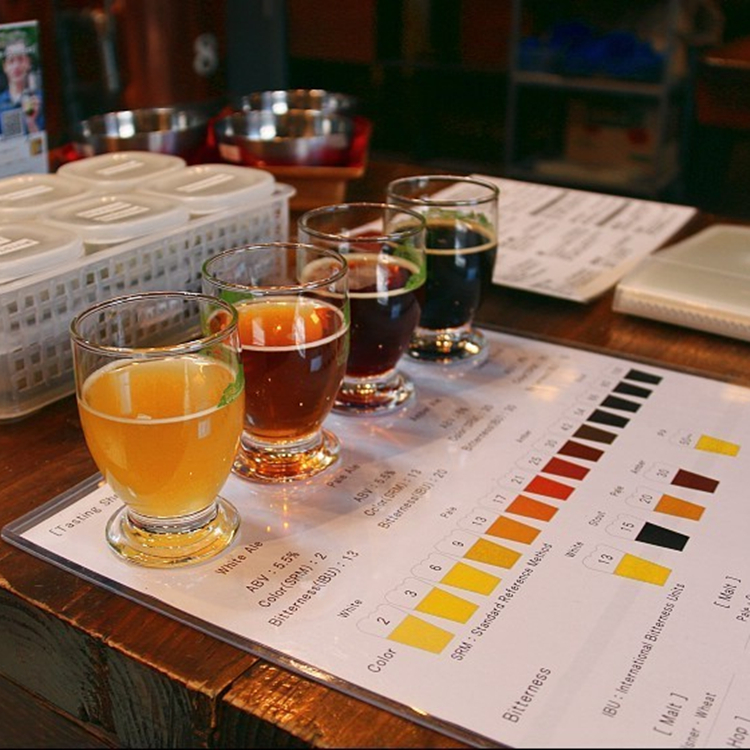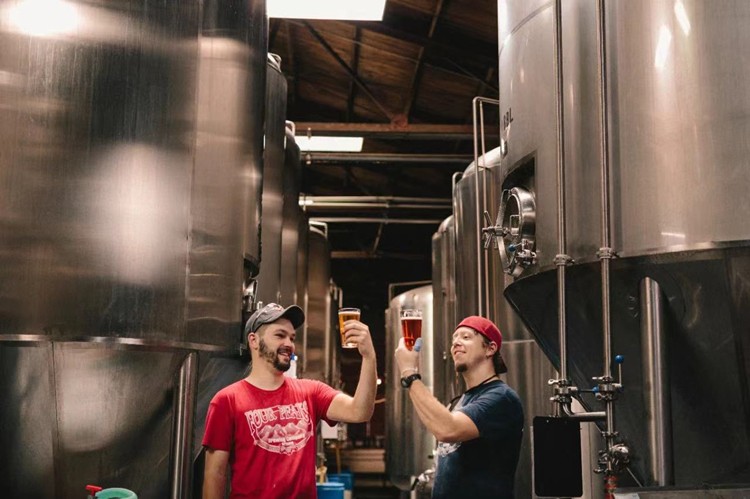
In this article, we will learn about electric brewing systems.When opening a brewery,a key decision is which brewery heating option to choose.The three main brewery heating options to choose from are electricity,direct fire and steam.
Determining the best option for you is not easy, and there are many factors at play.The first heating solution we will see is electric, and this option is usually used for smaller wineries as it is usually the cheapest installation option.

Forward-Build me an electric heating beer brewhouse
In this article, we will learn about electric brewing systems.When opening a brewery,a key decision is which brewery heating option to choose.The three main brewery heating options to choose from are electricity,direct fire and steam.
Determining the best option for you is not easy, and there are many factors at play.The first heating solution we will see is electric, and this option is usually used for smaller wineries as it is usually the cheapest installation option.
Electric heating brewing system--Build me an electric heating beer brewhouse
Compared with steam or direct fire, electric heating is different in that heating is internally heated rather than externally heated. The electrical components are located inside the container, so they are immersed in the liquid being heated.
This makes the energy transfer higher, and depending on the size of your vessels, you are likely to have 2 to 4 elements per tank.
You can control these elements and heat them in one of two ways:
Each element has a separate on/off switch, so the winemaker can turn them on/off as needed.
Use a dedicated control panel for greater accuracy, so you can adjust the percentage output of each element and/or set a set point for the temperature of your choice.

Mashing-Build me an electric heating beer brewhouse
There are two main methods of mashing, mixing hot water and malt to convert the starch in the grain into sugar. The first is a single soaking mash, you can enter at a set temperature and rest at this temperature for one hour.
Then you performed a one-step saccharification, and over time, you heated the mash to different temperature steps. For example, if you are making Hefeweizen, you may want to mash it at a lower temperature first to rest the protein. Then heat it for further rest later, for example amylase at a higher temperature.
If you are satisfied with the simple infusion mash, then it is the cheapest option. Because your mash bucket does not require any form of heating. Using today's modified malt can make a good beer in this way.
With a single soak, you can use the temperature of the mixed water to adjust the temperature of the mash. If you want a mash temperature of 65°C, then you need to set the outlet water temperature to 72-75°C. Know that adding malt will lower the overall temperature.
One disadvantage of this option is that you cannot heat the mash to "mash" it. However, because your spray water becomes hotter at 78°C (172.5°F), your mash will slowly increase in temperature anyway.

Electric brewing system-step mashing
There are two main options for heating the mash in an electric brewery. Neither is perfect (and will increase your expenses), but they are:
HERMS (heat exchanger recirculation mash system)-Build me an electric heating beer brewhouse
With the HERMS system, the mash is recirculated from your saccharification tank through a coil in the hot liquor tank (HLT) and returned to the saccharification tank. The temperature is regulated by the water temperature inside your hot liquor tank.
The main advantage of this system is that it is impossible to heat the mash above the hot liquor tank temperature. This means that there is no risk of overheating the mash and extracting bitter tannins.
The disadvantage is that the hot liquor tank temperature must be adjusted according to the required saccharification temperature. This may make your brewing time longer, requiring you to wait for your hot liquor tank temperature at different times throughout the brewing process.

RIMS (recirculating infusion mash system)-Build me an electric heating beer brewhouse
When your brewery has a RIMS system, the wort is pumped to the heating element in the tube. This element heats the wort and raises the temperature of the wort to your desired goal.
Having an external dedicated heater is an advantage over the HERMS system because you don’t need to change the HLT temperature on the day of brewing. However, the disadvantage is that the efficiency of this system is lower than that of HERMS.
Advantages and disadvantages of electric brewing and mashing control
If you choose an electric system and step saccharification, a fine control form is recommended. You need to install temperature probes in thermowells in various water tanks.
A proportional integral derivative controller (PID) is required to set the target temperature of the saccharification tank and HLT. Having a solid state relay (SSR) also allows you to control the output percentage of electrical components.
In addition, when using the HERMS system to heat your mash, please keep your HLT pump on to avoid temperature stratification in the tank. It will be more helpful if your pump has variable speed control.
Electric brewing system-kettle
When boiling wort in a kettle, the ideal goal is to evaporate 5% to 10% per hour. You also need to control the temperature of the kettle to avoid dangerous boiling over.
A proper understanding of the input energy required to reach boiling and achieve the desired evaporation rate allows you to program the control panel. Therefore, it allows you to reach your goal again and again for better consistency. Let's take a closer look at the input energy (wattage) to further clarify.

Electricity cost accounting--Build me an electric heating beer brewhouse
If you need to upgrade your electronic equipment to achieve higher output, it will quickly become expensive. You also need to check whether you need one-phase or three-phase, and the voltage.
You need to consider all the devices that may be used at the same time. If you are a beer bar, you may need kitchen operation, kettle boiling,hot liquor tank heating,and cold storage operation. What is your total load and can your system keep up?
Breweries up to 3.5 US barrels (approximately 400 liters) will use single-phase or three-phase, 208 or 240 service,and require 60 to 100 amps.
When you use 7 to 10 barrels (820 to 1,170 liters),you will need three-phase 208 service and 200 amps of available power.You can use more than 10 barrels of electric heating,but it is generally not recommended because of the high power required.
Electricity prices vary from place to place,so I will comment on the cost in your area. However,please check whether there are "peak hour" charges in your area, which may increase costs significantly.
Start-up cost of electric heating brewhosue-Build me an electric heating beer brewhouse
The price of tanks in electric breweries is at the low end. They are definitely cheaper than steam that requires an additional jacket. In addition, the cost of the components is cheaper than the burner (direct combustion) and is a small part of the cost of the steam generator.
The cost of the electrical system control panel depends on the system you order. If you choose a simple system with LCD readings and manual buttons, the price will be lower than the programmable touch screen.
In general, when heating the brewery, the price of the power system will be cheaper than direct fire (generally) and steam.

Building codes and local regulations-Build me an electric heating beer brewhouse
If you choose to build a brewery in a built-up area or residential area, then electric may be the right choice. In the use of direct fire and steam, there may be more local regulations and building codes.
Direct fire (open flame) and steam (actual steam generator) may require permits, ventilation, fire suppression, size restrictions, and/or inspections before installation and on-line.
Depending on your location, the only problem for the local authority may be the correct discharge of steam during the brewing process.
Build me an electric heating beer brewhouse-safety and environmental issues
When electricity is used, since there is no open flame, there is less risk of fire than a direct "fire" system. In addition, as long as the system is installed correctly and the wiring and grounding are correct, the possibility of electric shock is very small.
In the summer, direct fire can be a nightmare. Direct fire is inefficient because it will increase the air around the kettle and the wort itself. The electrical components are immersed in the wort for better heat transfer and therefore will not heat your brewing area.
Direct is not only very hot, but also very noisy; the overall electricity is more "comfortable" than direct fire.

Build me an electric heating beer brewhouse-conclusion
For aspiring brewery owners, electric brewing is an attractive solution because:
Cheaper equipment
Lower setup cost
When local regulations and building codes are involved, it is easier to open the road
When the component is immersed in liquid, heat transfer is higher
The downside is that electricity is usually more expensive than direct fire and steam operation, and you may have to pay more during "peak" hours. If you are considering a larger system, the system you are building may not be able to meet the required power requirements.
If you are a smaller party, such as about 3.5 US barrels (about 400 liters), I would seriously consider electric, because most buildings can meet the electricity demand. In addition, for smaller systems, it may be suitable for brewpub, where the use of space is very precious.
In this case, electricity makes sense because it takes up less space than steam or direct fire because you don’t need a fire box or boiler/generator
When you exceed 10 US barrels (approximately 1,200 liters), electricity becomes less attractive because the required power increases significantly. The last issue we haven't touched on is the possibility of "scorching."
In the past, brewers have been concerned about the local heating around the element when boiling the wort "scorching" or caramelizing the liquid. With the advancement of technology and the improvement of ultra-low-density elements, it is no longer a problem, but it is still worth emphasizing.
If you want to ask anything just fill in the form below and send us.